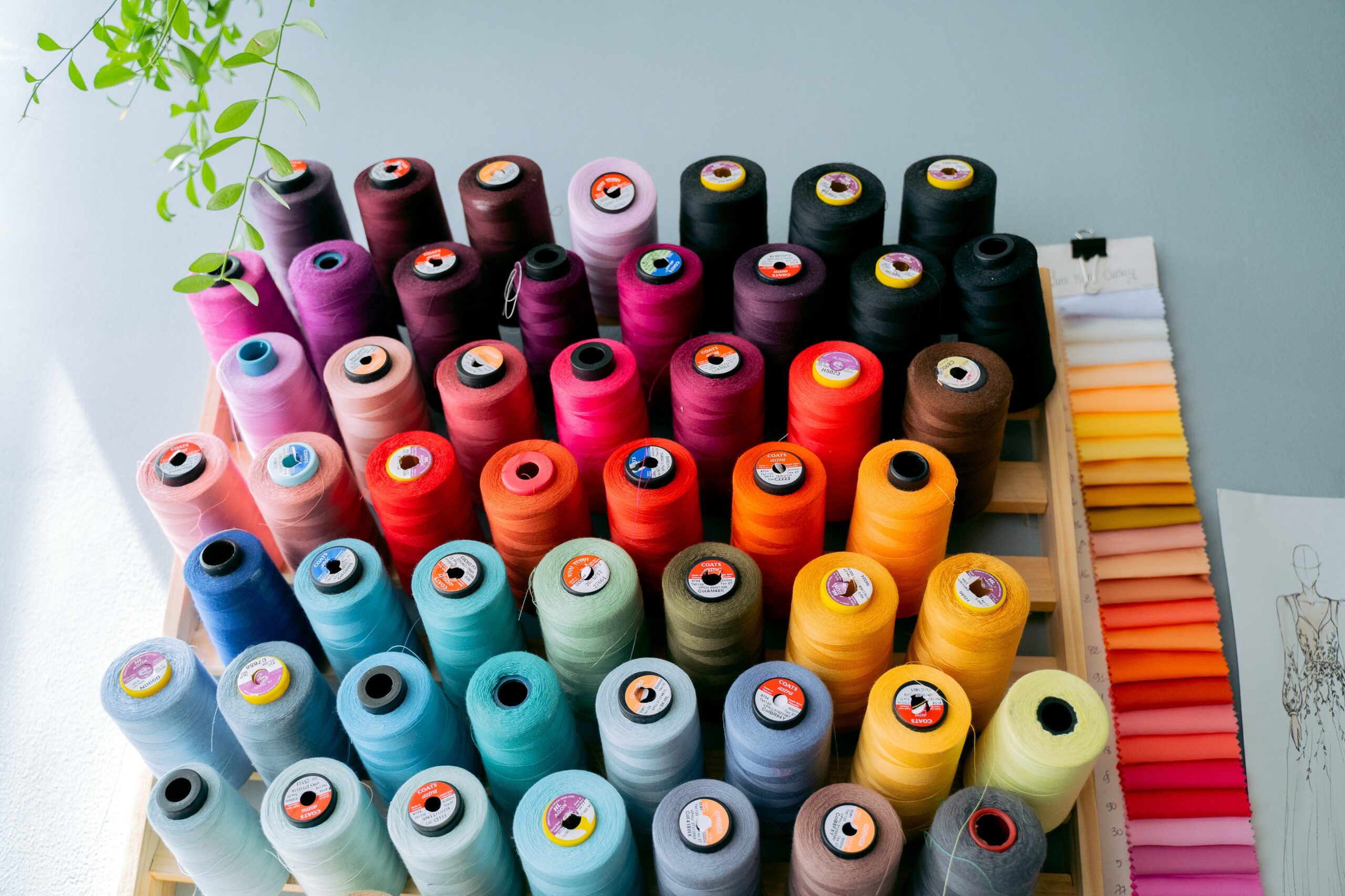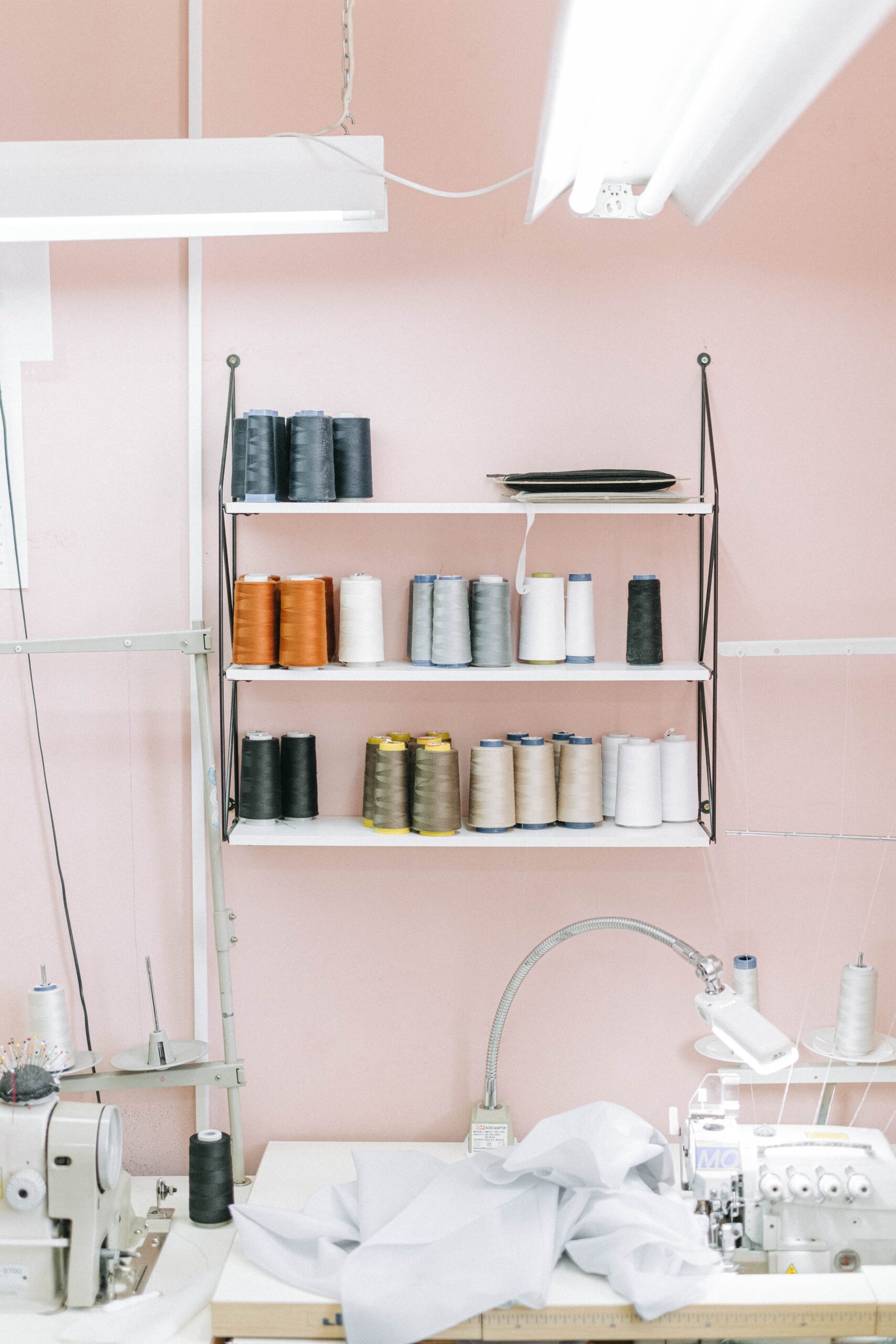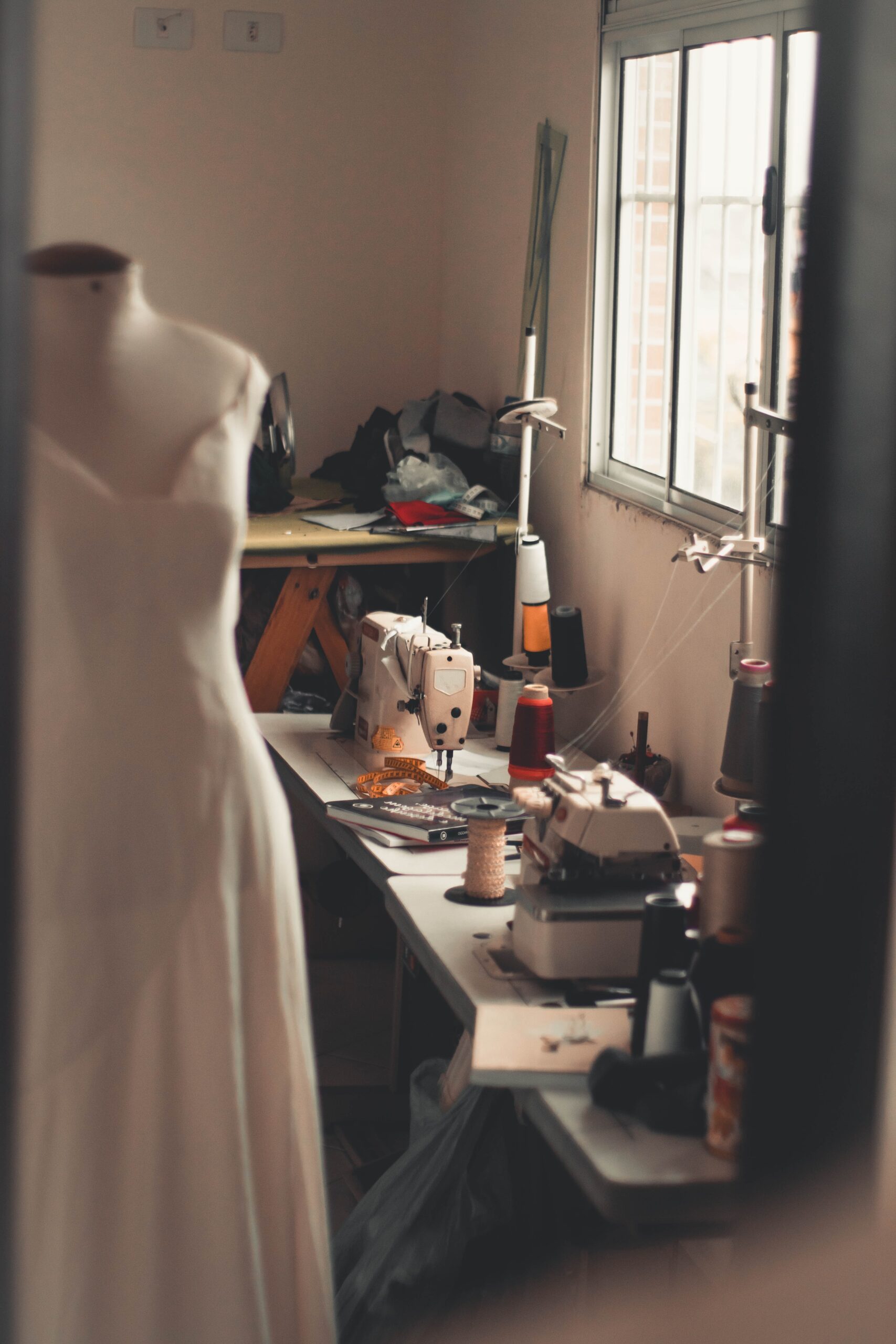Starting a sewing project can be confusing, frustrating, and stimulating, all at the same time. Thinking about the perfect fabric to use is one thing; matching a suitable thread is another thing. Choosing a sewing thread to work with may be a small detail, but it can significantly impact the outcome.
Before you begin your sewing craft, consider the color and quality of the thread that you will utilize. Mixing and matching your materials is a puzzling and trying task. However, there are helpful tips and guides to achieve a seamless creation.
Things to Consider When Choosing a Thread
Picking out the best thread for your fabric requires careful and detailed thought so as not to compromise the result of the project.
Type of Thread
The thread you use should match the fabric you’re working with. There are a variety of sewing threads you can choose from that would complement your sewing fabric.
Cotton Thread. You can best match cotton threads with cotton and linen fabrics. It also works with creating seams, buttonholes, and sewing buttons. Cotton thread is suitable for embroidery, decorative stitching, and embroidery. Most cotton threads are glossy and smooth (mercerized). However, this is not ideal for heavy-weight sewing fabrics.
Polyester Thread. This type of thread is durable and suitable for stretchy fabrics such as spandex. Good for sewing light to medium-weight synthetic sewing fabrics. It endures heat and does not shrink. Polyester thread easily slips through the cloth due to its silicone finish.
Nylon Thread. It is ideal for upholstery, leather, and other heavy-weight fabrics. It is also sturdy and durable. However, nylon threads not properly bonded will melt when exposed to heat.
Rayon Thread. It is perfect for decorative stitching and embroidery. It is also ideal for light to medium-weight synthetic fabrics. It is light, smooth, and has a glossy finish.
Silk Thread. This sheer and sturdy thread is suitable for silk, wool, and sewing other fabrics. It is also elastic and durable. It does not leave holes which is excellent for tailoring thread.
Wool Thread. It is best for heavy fabrics and embroidery projects. It is soft, elastic, and absorbs moisture. However, it is vulnerable to shrinking and weakening when wet.
Metallic Thread. It comes in gold, silver, and copper finish. It is best for decorative sewing projects. The rule is gold goes well with warm colors, silver is suitable for cool colors, and copper is best with brown and black shades.
Quality of Thread
Another thing to consider when choosing a thread is the quality. The quality of the sewing thread depends on the sewing project you will work on.
All Purpose Thread. It is suitable for various sewing projects and is widely available. It is ideal for light to medium-weight fabrics such as cotton and linen. Manufacturers commonly use polyester or cotton-wrapped polyester to make this thread.
Heavy Duty Thread. It is ideal for thick fabrics like the ones used for making coats and upholstery. It is extra sturdy and can withstand friction.
Invisible Thread. It is also known as monofilament thread or clear thread. It is best for sewing projects that require a barely-there finish. It is also durable and made of nylon.
Machine Thread. It is also called the bobbin thread. It is inside a tiny spool to fit in the sewing machine to form stitches on the underside of the fabric. It is much finer, lightweight, and shinier than most threads. It is also sturdy and durable to hold the stitches on the cloth together.
Tips on Matching Threads to Fabric
Selecting the right thread for your sewing project is essential to achieving a seamless outcome. There are different colors and shades you can choose from.
Determine What You’re Working On
Knowing your sewing project is significant in choosing the suitable thread for your fabric. There are threads ideal for each sewing fabric and stitch. Identify the type of thread you will use for your sewing plan.
The sewing thread should match the fabric you’re using. A cotton thread is best for cotton fabric. A polyester thread is ideal for synthetic sewing fabrics. You should also consider the quality of the sewing thread for every sewing project. Always choose a sewing thread suitable for your cloth.
Choose the Color Closest to your Fabric
There will be a time when you won’t find a sewing thread with the same color as your fabric, but if you have to choose from two shades, go for the darker tone. Darker shades blend in very well with your sewing fabric than lighter colors.
If you’re working with a printed or multi-colored fabric, select the dominant color for your thread. Choose the darker shade as it blends better on your sewing fabric.
Color Contrast Scheme
There is no rule that you can’t use contrasting colors for your sewing project. You can play with colors in the color wheel to determine the shade that would look better on your fabric. But remember that the thread color will stand out, and any imperfections on the stitches will be visible.
Consult the Color Wheel
If you are confused about what color you would use on your fabric, refer to the color wheel. You will never go wrong with colors that complement each other.
Complementary Colors. These are two shades opposite each other on the color wheel that works well together. Some examples of these shades are blue and orange, red and green, purple and yellow.
Analogous Colors. These are three colors next to each other on the color wheel. The colors orange, red-orange, and red are an example set. These colors are similar to each other and are pleasant to the eyes.
Triadic Colors. These are three colors equally separated on the color wheel. To identify these colors, you use an equilateral triangle shape. An example of these shades are yellow, red, and blue.
Test Run the Threads
Try buying different shades that blend with your sewing fabric. Then, do trial stitches on a scrap cloth. Now, you can compare and determine which sewing threads match your material. This method is best for multi-colored fabrics.
You can also try laying the sewing threads across the fabric to see which looks better. The shade you choose must blend and match the sewing fabric to achieve a seamless finish.
In conclusion, achieving a flawless outcome is a process. You have to consider everything before starting your sewing project. But with proper knowledge and materials, you will have your desired result.





